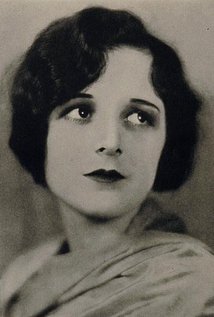
Mary Astor
Birthday:
3 May 1906, Quincy, Illinois, USA
Birth Name:
Lucile Vasconcellos Langhanke
Height:
165 cm
Mary Astor was born, Lucile Vasconcellos Langhanke, on May 3, 1906 in Quincy, Illinois to a German immigrant father, Otto Ludwig Langhanke, and an American mother from Illinois, Helen Marie Vasconcellos, of Portuguese and Irish ancestry. Her parents were very ambitious for her as they recognized Mary's beauty and knowing if they played their c...
Show more »
Mary Astor was born, Lucile Vasconcellos Langhanke, on May 3, 1906 in Quincy, Illinois to a German immigrant father, Otto Ludwig Langhanke, and an American mother from Illinois, Helen Marie Vasconcellos, of Portuguese and Irish ancestry. Her parents were very ambitious for her as they recognized Mary's beauty and knowing if they played their cards right, they could make her famous. They understood that they wanted something better for their daughter than they had, so they made it happen by pushing Mary into various beauty contests. Luck was with Mary and her parents because one contest came to the attention of Hollywood moguls who signed her at the age of 14. Her first movie was a bit part in The Scarecrow (1920). It wasn't much, but it was a start. Throughout 1921-1923 she continued her career with bit or minor roles in a number of motion pictures. In 1924, Mary landed a plum assignment with a role as Lady Margery Alvaney opposite the great John Barrymore in the film Beau Brummel (1924). This launched her career to stardom as it did with a lively affair with Barrymore. However the affair ended before she could star with him again in the classic Don Juan (1926). Mary was, now, the new cinematic darling with each film packing the theaters. By the end of the twenties, the sound revolution had taken a strong hold on the industry and Mary was one of those lucky actresses who made the successful transition to "talkies" because of her voice and strong screen presence. Mary's career took off to greater heights. Films such as Red Dust (1932), Convention City (1933), Man of Iron (1935), and The Prisoner of Zenda (1937), kept her star at the top. In 1938, Mary turned out five feature films which kept her busy and in the spotlight. Afterwards, she churned out films at a lesser rate. In 1941, she won the Oscar for Best Supporting Actress for her role of Sandra Kovac in The Great Lie (1941). That same year she appeared in the celebrated film The Maltese Falcon (1941), but her star soon began to fall. Because of her three divorces, the death of her first husband, Kenneth Hawks who died in a plane crash, alcoholism, a suicide attempt, and a persistent heart condition, Mary got smaller roles in movies. In the whole of the 1950s she appeared in only five productions. Her final fling with the silver screen was as Jewell Mayhew in Hush...Hush, Sweet Charlotte (1964). Even though this was her final film, she had appeared in a phenomenal 123 motion pictures. Mary lived out her remaining days confined to the Motion Picture Country Home where she died of a heart attack on September 25, 1987 at the age of 81. Show less «
A painter paints, a musician plays, a writer writes - but a movie actor waits.
A painter paints, a musician plays, a writer writes - but a movie actor waits.
I was never totally involved in movies. I was just making my father's dream come true.
I was never totally involved in movies. I was just making my father's dream come true.
It's not good to make sentimental journeys. You see the differences instead of the sameness.
It's not good to make sentimental journeys. You see the differences instead of the sameness.
[on her early Hollywood roles] I was as two-dimensional as the screen itself: cool, indifferent, looking lovely in close-ups. Period. Period...Show more »
[on her early Hollywood roles] I was as two-dimensional as the screen itself: cool, indifferent, looking lovely in close-ups. Period. Period. Period. When was I ever going to learn to act? You can't learn if you can't experiment and find out what works and doesn't work. But the hours are long, the schedule rigid, so I did what I was told and saved time and money for the front office. And got a lot of jobs that way. Show less «
Once you start asking questions, innocence is gone.
Once you start asking questions, innocence is gone.
A person without memory is either a child or an amnesiac. A country without memory is neither a child nor an amnesiac, but neither is it a c...Show more »
A person without memory is either a child or an amnesiac. A country without memory is neither a child nor an amnesiac, but neither is it a country. Show less «
[on George S. Kaufman] He was the kind of man I'd go over a cliff for.
[on George S. Kaufman] He was the kind of man I'd go over a cliff for.
There are five stages in the life of an actor: Who's Mary Astor? Get me Mary Astor. Get me a Mary Astor Type. Get me a young Mary Astor. Who...Show more »
There are five stages in the life of an actor: Who's Mary Astor? Get me Mary Astor. Get me a Mary Astor Type. Get me a young Mary Astor. Who's Mary Astor? Show less «
At Metro, you practically had to go to the front office if you wanted something as real as having your hair mussed. All automobiles were shi...Show more »
At Metro, you practically had to go to the front office if you wanted something as real as having your hair mussed. All automobiles were shiny, a picture never hung crooked, a door never squeaked, stocking seams were always straight and no actress ever had a shiny nose. Show less «
I was never totally involved in movies. I was making someone else's dream come true. Not mine.
I was never totally involved in movies. I was making someone else's dream come true. Not mine.
NEXT PAGE

The Princess Centimillia

Brigid O'Shaughnessy

Mrs. Anna Smith
















